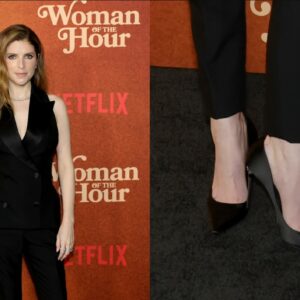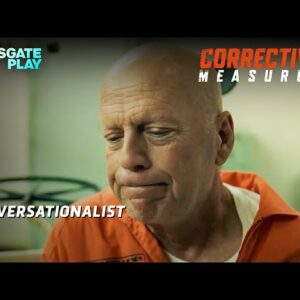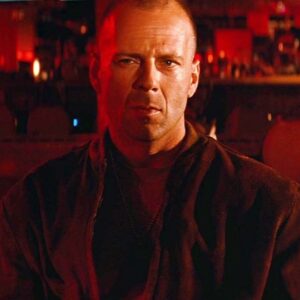Dakota Johnson’s portrayal in Suspiria, Luca Guadagnino’s 2018 reimagining of the Dario Argento horror classic, dives into a realm where horror meets the senses in ways beyond the visual—particularly through the haunting power of sound. The original Suspiria was already known for its unforgettable, avant-garde soundscapes, and this new iteration embraces sound as a narrative force, pushing boundaries and giving depth to the horror genre. The ability of soundtracks and meticulous sound design to evoke terror and elevate a film’s emotional landscape is often unparalleled, and in Suspiria, these auditory elements transcend mere accompaniment; they act as a portal, leading viewers into the film’s disorienting and often terrifying world.
The soundtrack for Guadagnino’s Suspiria, composed by Thom Yorke of Radiohead, diverges from traditional horror motifs, interweaving ambient dread with moments of almost heartbreakingly tender melodies. Yorke’s score and the film’s nuanced sound design collaborate to carve out an unsettling, multi-layered narrative that pulls audiences into a psychological labyrinth. Here, we explore how Yorke’s soundtrack and the film’s sound design enhance the movie’s atmospheric intensity, create an emotional undercurrent, and redefine the role of music in horror cinema.
Overview of “Suspiria” and Its Soundtrack
Suspiria unfolds in Cold War-era Berlin, following the young American dancer Susie Bannion, played by Johnson, as she joins a prestigious but mysterious dance company. As Susie dives deeper into the company’s arcane rituals, she and the audience discover unsettling secrets lurking within. The film combines psychological horror with body horror, evoking visceral terror through its storyline, visuals, and soundscape. Here, the score plays a vital role, not just as background music but as a narrative layer, shaping the emotional terrain of the story.
Unlike the cacophonic score by Goblin in Argento’s 1977 version, Yorke’s score weaves understated yet potent compositions. His soundtrack is often restrained, creating dread not through volume or speed but through delicate sounds that feel as fragile as glass. Rather than the sharp, staccato rhythms common in horror, Yorke’s compositions employ dreamy, atmospheric melodies. These pieces feel akin to a lullaby that can lull you into a false sense of comfort before plunging you back into terror. This balance of beauty and disquiet is integral to Suspiria, and Yorke’s approach upends typical horror expectations, leaning on subtlety and eerie elegance.
Thom Yorke’s Influence on the Soundtrack
Yorke, known best for his work as the lead singer and primary songwriter of Radiohead, brings an introspective, haunting quality to Suspiria. His music often traverses the realms of existential dread, melancholy, and surrealism, making him an ideal fit for Guadagnino’s psychological horror. As Yorke’s first foray into film scoring, Suspiria allowed him to experiment with sounds that evoke fear and mystery. His background in Radiohead, a band celebrated for their ability to make eeriness feel hypnotic, clearly informs the soundtrack’s composition.
One of the defining features of Yorke’s work on Suspiria is his use of recurring motifs, which play across different emotional registers. In “Suspirium,” a recurring piano melody becomes almost a theme for Susie, the main character, echoing her innocence, curiosity, and underlying darkness. By repeating this melody in different forms—sometimes calm, other times unsettling—Yorke hints at the duality of Susie’s journey. There’s an inherent fragility to the piece that draws audiences into her psychological state, making the melody resonate as something familiar yet deeply alien.
Yorke also deploys silence as an instrument, crafting a score where the absence of sound can be just as powerful as its presence. By pausing his compositions at moments of high tension, he allows the audience’s anticipation to build, layering anxiety without needing to add new musical elements. This careful use of silence echoes Yorke’s signature ability to draw audiences into emotional spaces, keeping them on edge with unresolved notes, harmonies that never quite resolve, and rhythms that seem to trail off into ominous quiet.
Role of Sound Design in “Suspiria”
In Suspiria, sound design functions as an active, dynamic element that interacts with Yorke’s compositions, layering tension and atmospheres of dread. The collaborative relationship between sound design and soundtrack is especially notable in the film’s most intense scenes, where whispers, silence, and sudden bursts of sound work in tandem with Yorke’s music to create a visceral sense of horror. These elements don’t just underscore the terror; they amplify it, bringing out the grotesque elements that words or visuals alone couldn’t convey.
One example of this is in scenes where silence becomes an element of suspense. Silence, rather than being a moment of calm, is often a warning sign in Suspiria. In moments where Yorke’s music fades and only faint ambient sounds remain, the viewer is left holding their breath, awaiting the horror they know is lurking nearby. The sound design employs this as a tactic, amplifying ambient noises—footsteps echoing through empty hallways, breaths growing louder in confined spaces—to create a suffocating sense of claustrophobia.
Moreover, the sound design employs whispers and indistinct murmurs, especially in the witches’ scenes. These sounds create an unsettling auditory environment that mirrors Susie’s descent into the dark heart of the dance academy. The whispers suggest secrets just out of reach, fragments of conversations never fully heard, allowing the viewer to feel as if they, too, are intruding on something forbidden. The layers of faint, overlapping voices create a disorienting experience, blurring the line between reality and hallucination.
Impact of the Soundtrack on Storytelling
In Suspiria, music and sound design don’t just support the visuals; they enhance the narrative, creating a psychological texture that allows viewers to feel Susie’s experiences as she unravels the academy’s dark secrets. Yorke’s compositions often mirror the protagonist’s journey, beginning with innocence and curiosity and evolving into something darker and more ominous. This evolution in the score adds a psychological layer to the storytelling, as each musical cue reflects not just the scene’s mood but Susie’s shifting state of mind.
Yorke’s music also highlights moments of transformation, such as when Susie fully embraces her role within the coven. During this pivotal moment, the score erupts in an eerie yet exultant composition, blending dissonance with reverence, suggesting both the terror and power of the transformation. This musical shift underscores Susie’s journey from an outsider to someone deeply enmeshed in the academy’s dark rituals, drawing the audience further into her metamorphosis.
Additionally, the soundtrack supports the theme of duality—the tension between beauty and horror. Yorke’s haunting lullabies serve as an auditory metaphor for the witches’ coven: seemingly nurturing yet deadly. The track “Unmade” plays during a scene of disturbing beauty, combining Yorke’s ghostly vocals with a fragile piano line that enhances the film’s unsettling atmosphere. Here, music and story converge, portraying horror as something that can be both mesmerizing and terrifying.
Legacy of “Suspiria’s” Soundtrack
The Suspiria soundtrack has left an indelible mark on the horror genre, especially in how it uses music to shape psychological landscapes. Yorke’s work on Suspiria challenges the notion of horror soundtracks as mere accompaniments, instead positioning music as an integral aspect of the story’s structure. By blending ambient and melodic elements, Yorke’s soundtrack shifts the audience’s perception of horror, making it an experience that transcends fear to evoke empathy, introspection, and a profound sense of unease.
Yorke’s soundtrack is an innovative contribution to the horror genre, proving that sound design and scoring can redefine narrative elements in ways rarely seen in traditional horror films. His score has set a new standard for using music as a storytelling tool, one that goes beyond jump scares and shock value to cultivate a more immersive, emotionally complex viewing experience. Suspiria has opened the door for horror films to experiment with sound and music, setting a high bar for psychological horror soundtracks.
Conclusion
The Suspiria soundtrack’s impact on the film’s atmosphere and emotional core cannot be overstated. Thom Yorke’s haunting compositions and the meticulously crafted sound design immerse audiences in a world where beauty and horror coexist, each underscoring the other in an endless cycle. Together, they build a narrative experience that lingers long after the credits roll, etching themselves into the viewer’s subconscious. In Suspiria, sound is not just an element of horror; it is the very fabric of its world, a haunting reminder of the thin line between the familiar and the terrifying.
As modern horror continues to evolve, Suspiria will stand as a landmark example of how soundtracks can shape a film’s emotional landscape, leading audiences into depths of fear and fascination that they may not fully understand but are compelled to explore. The music of Suspiria resonates beyond the screen, leaving a lasting impression that challenges the boundaries of horror and redefines the soundtrack’s role in cinema.





